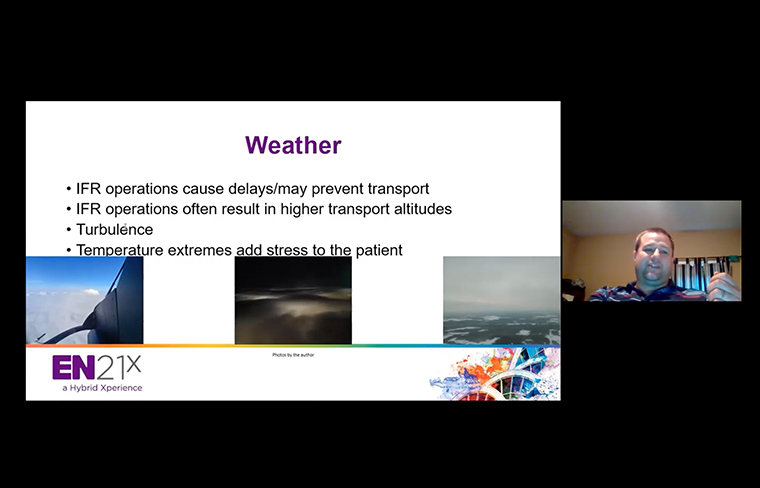

Stay on solid ground and begin additional patient stabilization measures before takeoff or take to the sky immediately, initiating additional care en route, to arrive at the destination emergency department as quickly as possible. Flight nurses find themselves at this crossroad every day.
This afternoon, Christopher Benson, a flight nurse with Mercy Flight in western New York, will review the factors to consider when deciding which approach to use.
Stay and Play or Snatch and Go: Understanding the Operating Paradigms of Different Air Medical Transport Organizations begins at 1 p.m. Central Time.
Space and noise levels in the aircraft, weather conditions and required altitude for flight are all potential stressors that must be considered.
“The more we do at the bedside, we have a greater buffer against any of these transport stressors, so the patient is more resistant to any of the changes that they’re going to get thrown at them,” Benson said.
But this isn’t a clear win for the so-called “stay and play” method. Some organizations opt for “snatch and go” as their primary approach.
“We cut down a lot of the time getting the patient to the care they actually need because we’re doing a lot of this stuff on the way,” Benson explained. “The downside is they are less stable for transport.”
Drastic temperature changes — from a climate-controlled ED to the outside environment — can take their toll on a patient already in a critical state. During the winter in the Northeast, a patient could be subjected to a swing of 70 degrees or more in a matter of minutes going from an ED heated to a stable 68 degrees to the sub-zero temperatures of the landing pad, Benson said.
Once airborne, the bumpy environment created by turbulence exacerbates the challenges of applying a steady hand to patient care.
“First of all are the stressors on us and the things that we have to do, but this is adding a whole lot of stress on the patient,” Benson explained. “We have to worry about tubes coming loose. We have to worry about clots getting broken loose, the loose bone ends grating on each other or worsening any bleeding.”
Ultimately, the decision to stay or go largely hinges on the capabilities of the air medical program and the characteristics of the flight in question, he noted.
EN21 session recordings will be available for on-demand viewing on the virtual meeting platform through Jan. 31.

